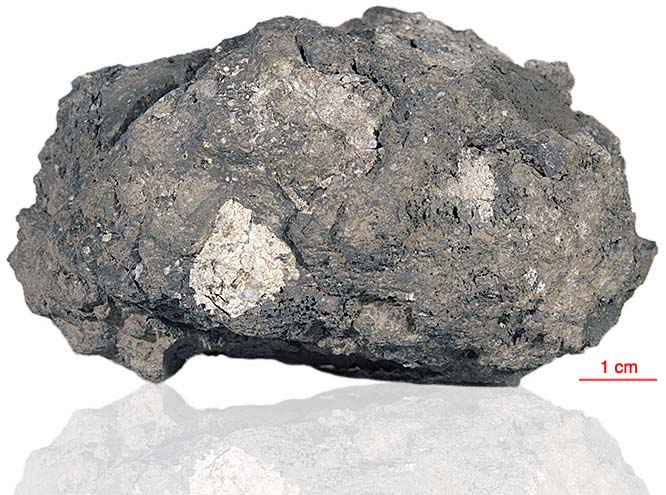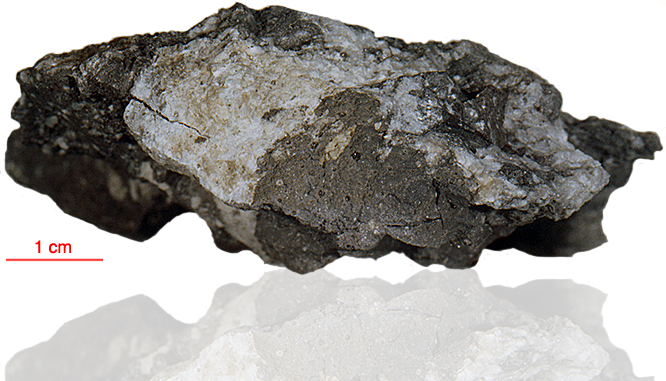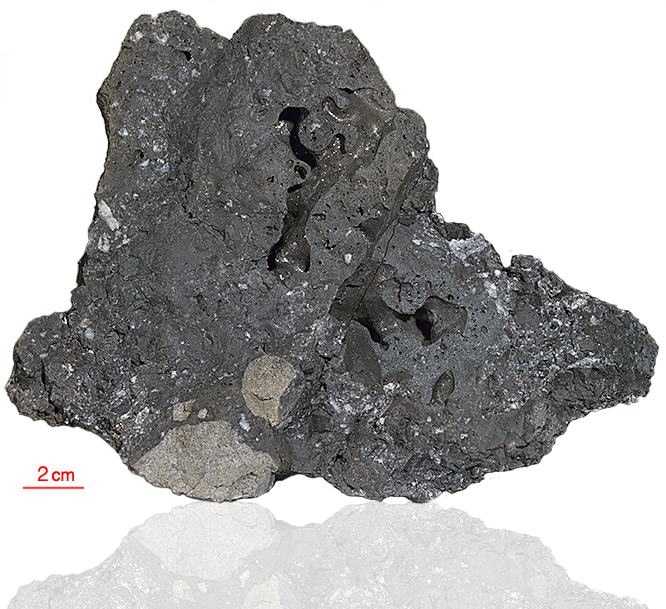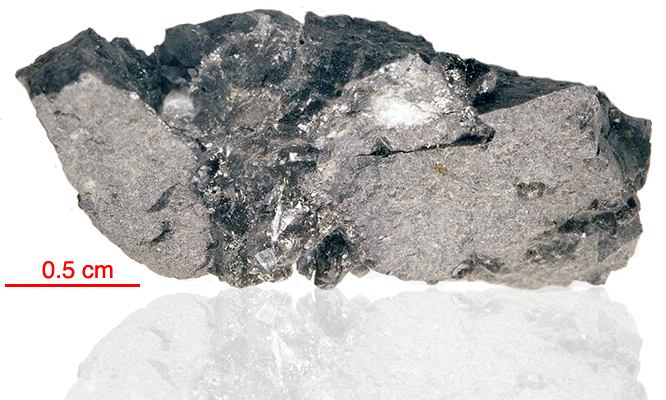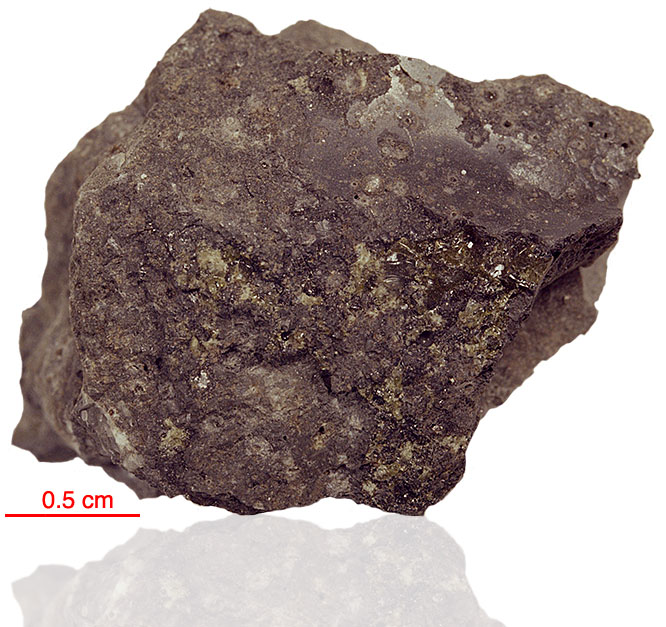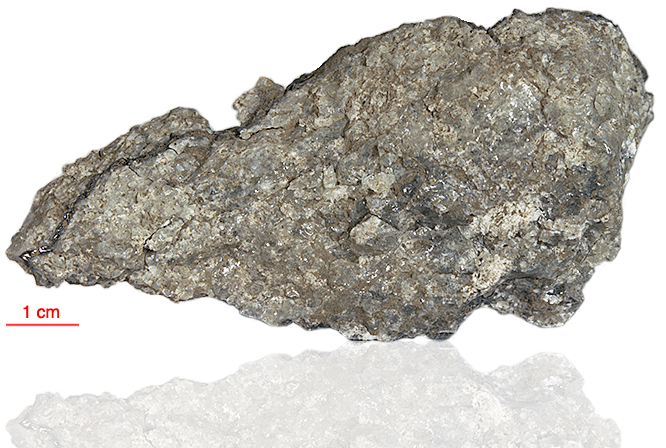
Fact sheet
69955 was chipped from the bottom of a 0.5 m boulder found perched on the lunar regolith. Hence, 69955 is a clast in a breccia. The sample is almost entirely made of plagioclase. Most of the plagioclase has been converted to maskelynite. Less shocked (still birefringent) patches of plagioclase within the maskelynite are as much as 3 mm across. Rare pyroxene grains are 0.1-0.08 mm across and have no visible exsolution lamellae (tiny crystals visible in rotation 2). Some relict intergranular texture is preserved in lithic clasts. A 1 mm thick layer of impact melt glass is visible on the left of our thin section (see rotation 1).
The sample weighed 75.9 grams before analysis and has not been dated.
Our thin section is slightly thick so between crossed polars some plagioclase crystals are yellow instead of shades of grey. Note that the yellow rim visible in reflected light is the remains of a gold coating applied to the sample prior to analysis.
Further details of this and other Apollo samples are here: http://curator.jsc.nasa.gov/lunar/
The Apollo 16 landing site was in the hilly region around Descartes crater in the lunar highlands. The landing spot was chosen to allow the astronauts to gather geologically older lunar material (Descartes Formation and the Cayley Formation) than the samples obtained in the first four landings, which were in or near lunar maria.
The mission lasted 11.1 days, with a stay on the lunar surface of 71 hours. The crew were on the lunar surface for 20.2 hours during which they traversed approximately 27 kilometers and collected approximately 96 kilograms of samples.
Apollo 16 was launched on 16 April 1972.

